The Striped Boho Bench DIY is pretty easy, guys! Seriously, if you can tape down some straight lines, then you can do this painted furniture project.
Plus, it’s super cheap, assuming you already have the piece of furniture you want to paint. Because the paint I used is less than $0.99 a bottle and you can get by with one roll of tape if you need to.
Overview
Time: 3-5 hours.
Difficulty: Easy
Cost: $25-$30 for supplies excluding the piece of furniture.
Think about the furniture you have and where it is in your house. Which piece could be the perfect statement piece and attention grabber if it were to have a new bold paint job?
I chose to finish a bench I built a few months ago from Ana White plans you can find here. Or go to ana-white.com and search for the Providence bench.
This is the same style bench from a different project in the photo below. However, I had bare wood on the bench seat for this project. Not the black you see in the photo.
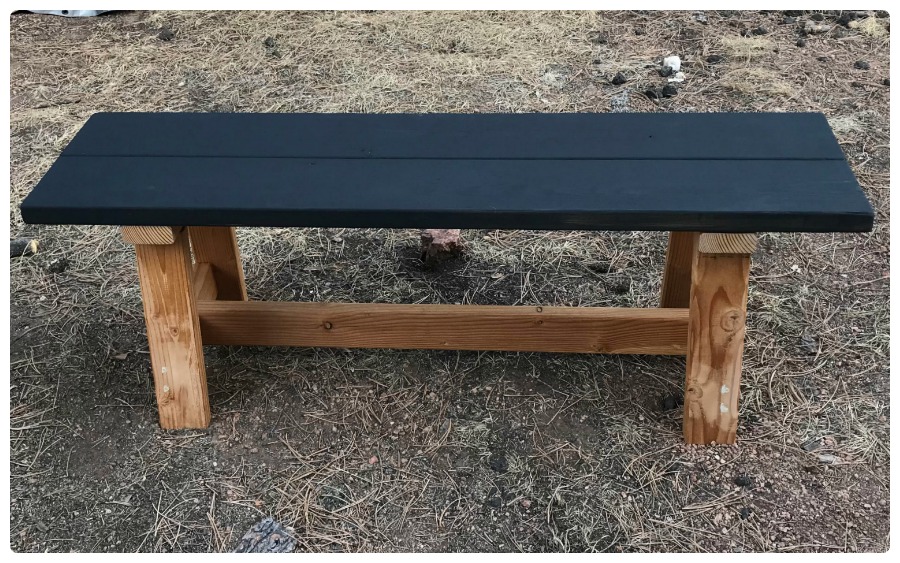
The bench has been sitting around my shed waiting for the right kind of inspiration and time to paint it! Benches are so versatile because they fit in anywhere you put them – at the foot of a bed, in the entryway, at the dining table, etc. For that reason they can make the perfect statement piece that you can move around to whichever room you like.
Okay, let’s get to it! I’m going to go step by step through how I accomplished this striped boho bench diy. It’s not hard, it’s just a lot of taping!
Supplies
Gather up all your supplies first. Some of the following links may be affiliate links. As always I only refer you to products I use and like.
- Lots of cheap acrylic paint
- in blues, greens, lime green and magenta or red. I bought the cheapest ones I could find. They aren’t high quality, but it doesn’t matter for how we are going to use them.
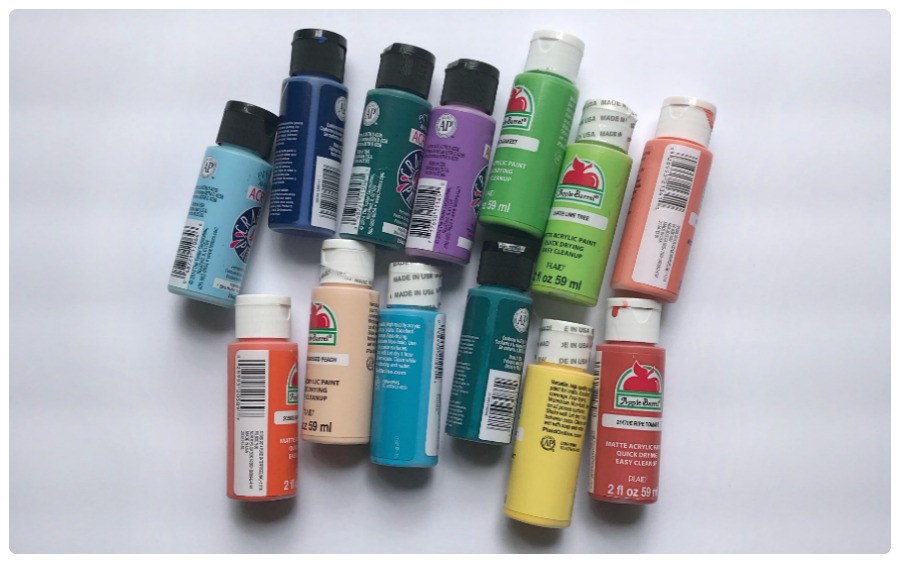
- 1 roll of concrete/stucco/brick tape.
- You can get by with one roll, but I used 3 rolls of varying widths.
- Several Cheap foam brushes
in about a 1 in or 1.5 in width.
- Sanding sponge
- Minwax Polyurethane in Satin
to clear coat it at the end
Instructions
1. Before painting we need to prep the bench.
Start by lightly sanding the bench to remove any splinters and allow the paint to stick properly.
When wood is cut at the mill, sometimes the blade is so hot it causes the sugars in the wood sap to crystallize on the surface of the wood, creating a film that paint and stain don’t stick to very well. That’s one reason you always want to lightly sand before you paint or stain!
Dust off the bench with a rag or vacuum and then go over it with a tack cloth to get any remaining stubborn dust.
Now that it’s all clean, we can start taping off the stripes.
2. Apply strips of tape all over the bench.
I used 3 different widths of tape. But if you want to keep costs down, all you need is one roll – go with the 1 inch tape.
You can always tape multiple strips side by side for a wider stripe. I went with the green tape for cement/stucco/brick because it’s extra sticky and gives me good edges.
Btw, if you leave the tape on in warm weather for a couple days you may get some tape residue on your bench, but we are going to remove it right away, so you shouldn’t have a problem.
Tape off your stripes with the skinny tape first. Just go crazy taping tons of stripes, some going across the entire width, some just going halfway. Don’t forget to press it into the crease where the boards meet in the middle, so paint doesn’t sneak into the crevice.
Now tape off some medium sized stripes randomly across the bench.
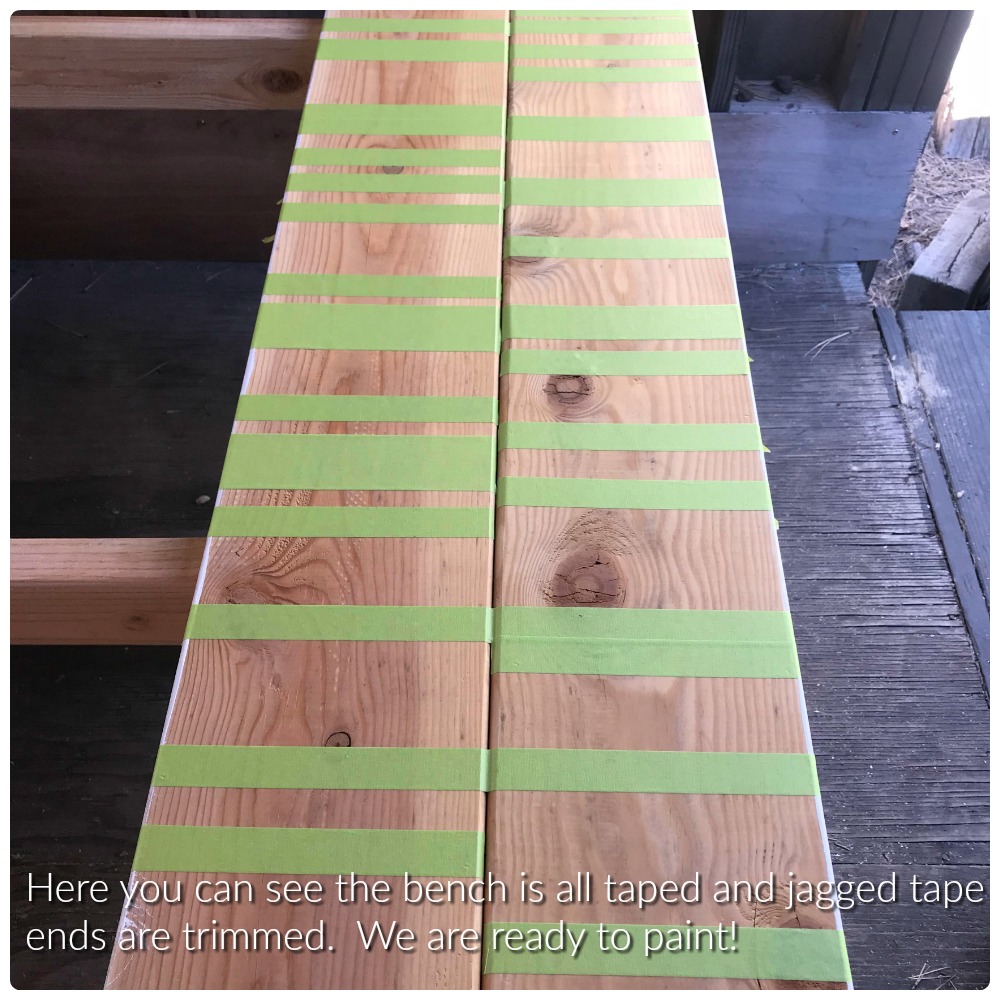
Finally add some stripes sparingly that are 3 or 4 inches wide.
If it helps, you may want to measure off tick marks on both sides of the bench so you know your tape is going across in a straight line. Or, heck, it could look really cool to just purposely make them all go slightly diagonal.
On my bench I had some stripes only go halfway across the bench, so on those ones I used a craft knife to neatly trim off the ends where they were pressed down into the seam where the boards meet.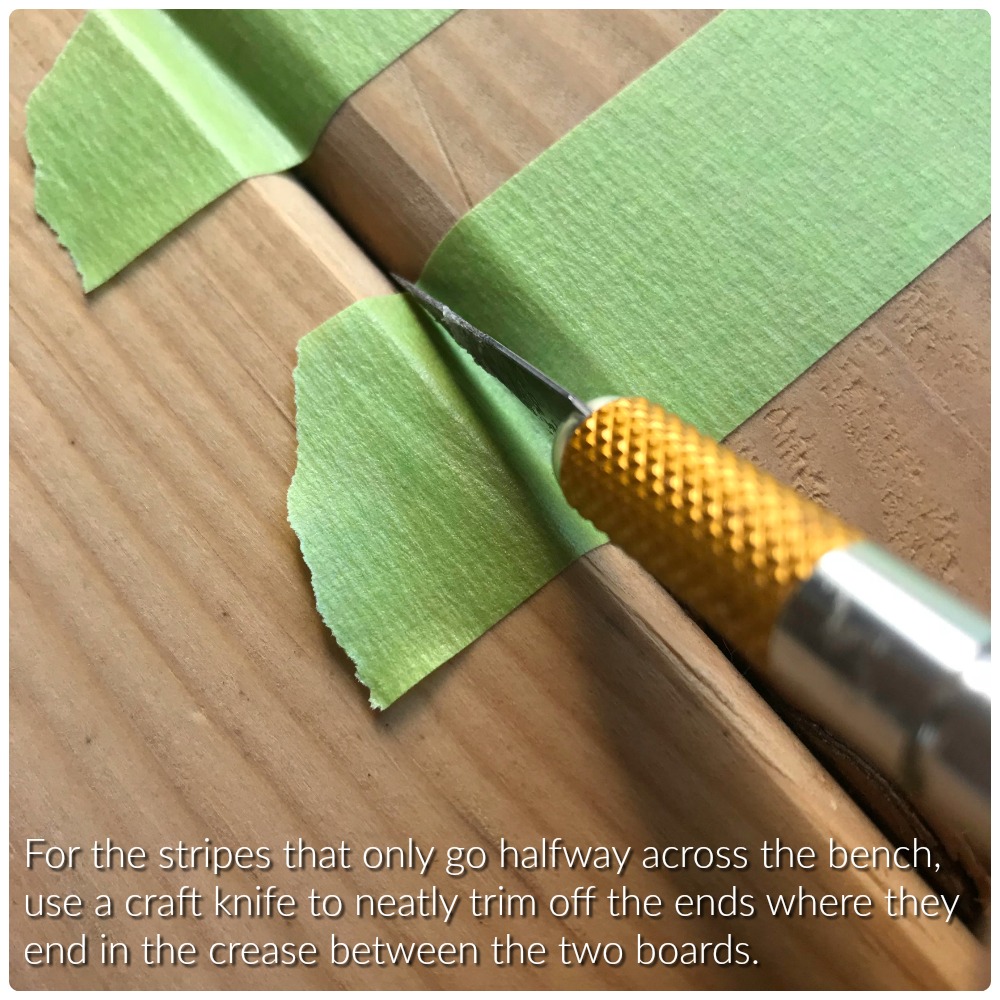
3. Start painting your base colors.
Now I took all my blue bottles of paint and started painting the bare spots between all the tape. I used each color for a couple stripes then moved onto a new shade of blue.
Then I mixed a couple blues and painted a few more bare spots until there weren’t any bare spots showing.
As long as you don’t have any puddles or glops of paint sitting there, go ahead and remove your tape. It’s okay if the paint is damp, you just don’t want any puddles of paint. 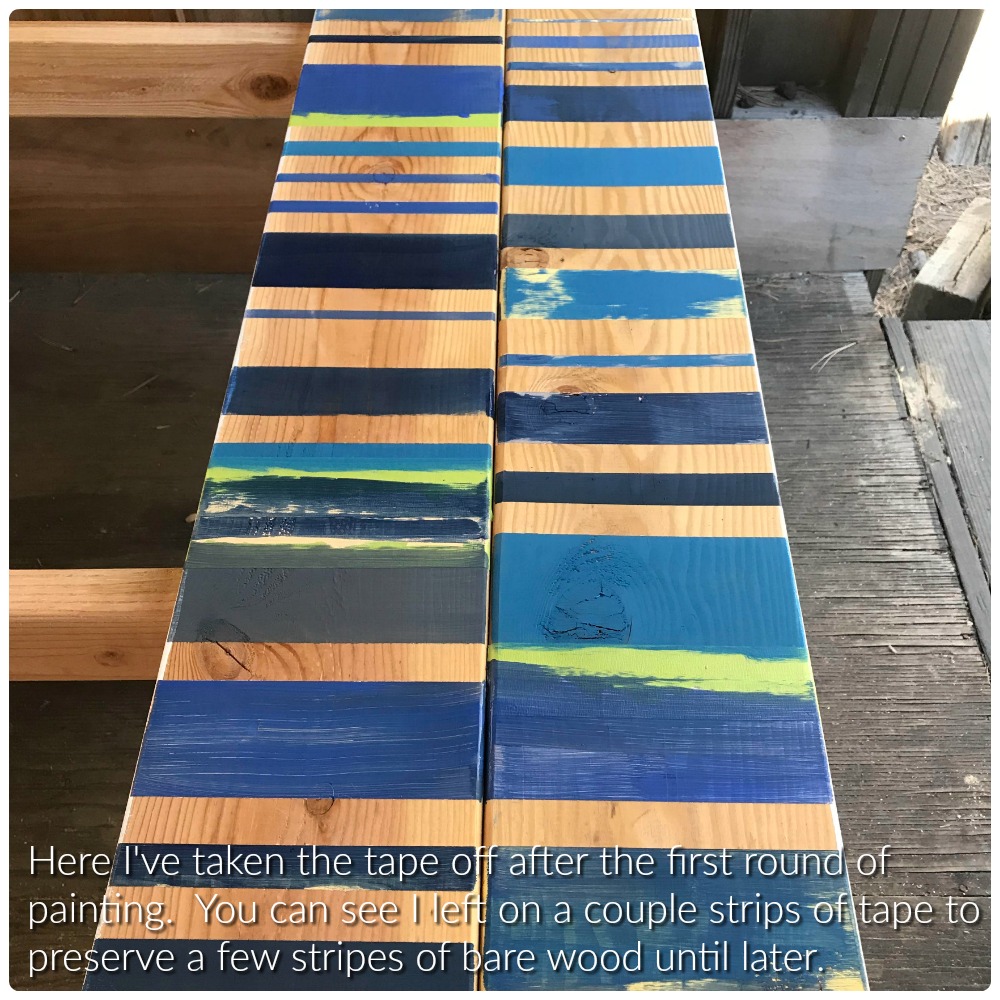
Wait for your blue paint stripes to dry completely before moving on.
Okay, you are about 40% done!
4. Lay down a second round of tape strips.
Once the blue stripes are all dry, you can start your second round of taping! Yippee! I know, I know, this is probably the most boring part, but hang in there, it’s so worth it for the end result.
This round of taping you are mostly just taping over the blue painted stripes to protect them from being painted. But, a couple times I overlapped the blue stripes that part of the blue stripe was protected by tape and part of it would get painted.
5. Paint your second round of stripes!
Start filling in the bare parts with your green hues.
Once you’ve used each color then start mixing them together to make new greens and paint more bare stripes.
If your paint is damp but not gloppy, go ahead and remove the tape stripes.
Don’t freak out if it the tape pulls up some of the paint you had taped over. This will just add character to the distressed look.
You can see in this photo below, it isn’t all that pretty yet. It’s still very messy and not pulled together. Just wait!
Wait for the green stripes to dry! Go watch 30 minutes of Netflix or get a snack.
6. Paint in the remaining bare spots.
At this point you still may have about 5 to 10% of your stripes remaining as bare wood. With these last stripes I chose colors that I thought looked really pretty next to the existing colors.
Fill in all the remaining bare spots except for one or two bare stripes.
Everything looked too bright to me at this point so I took my cup of water in which I was resting my paint brushes and I just painted the murky water over everything.
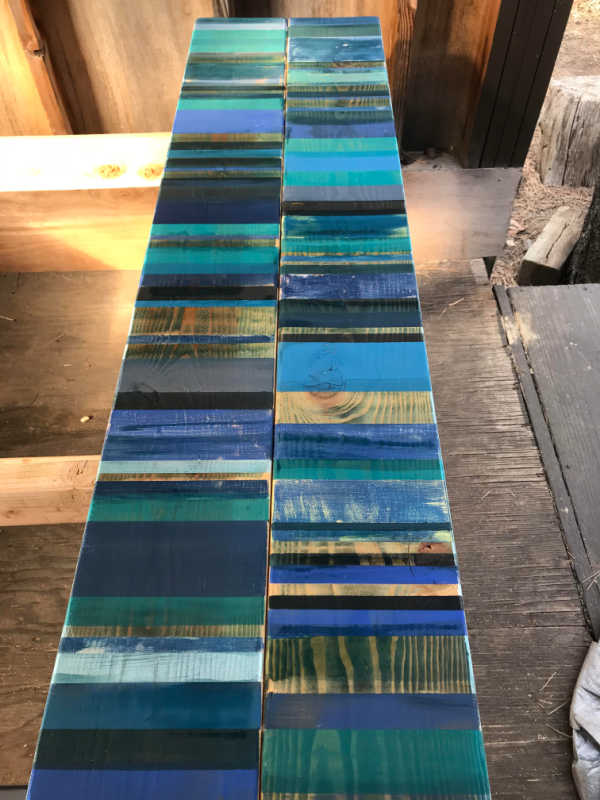
It knocked down the brightness a degree and I like it better.
7. Add a focal point.
Now everything was duller, which I wanted, except there was no focal point.
All the blues and greens just flowed into each other. So to add some contrast and a focal point, I added the little stripes of lime green and reddish-magenta.
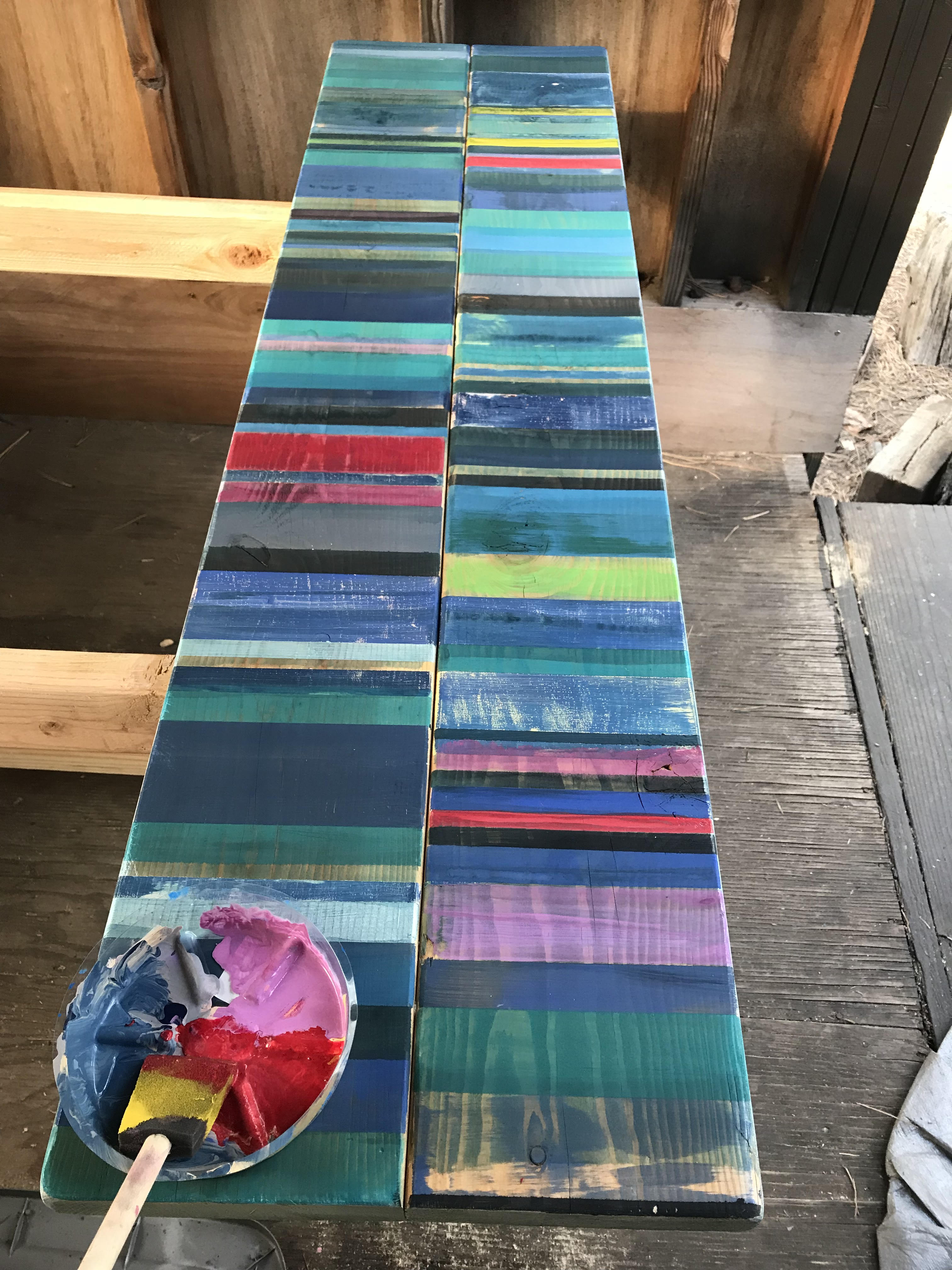
Do this VERY sparingly so your eye is drawn to one or two places on the bench, not everywhere.
Okay, we are looking pretty good at this point!
Wait for it to dry. (sigh)
Now I went to town sanding it all down by hand with a sanding sponge. A new 100 grit sponge will probably do the trick fine.
Sand down the top lightly, but go heavy on the edges and corners.
Sand more heavily anywhere you can imagine it would naturally get a lot of handling or knocking around. You can even choose a spot or two on the surface to wear down a bit.
On my bench you can see the wood grain through almost all of the stripes. You don’t have to sand but I like how it softens the colors and makes the bench look well worn and well loved!
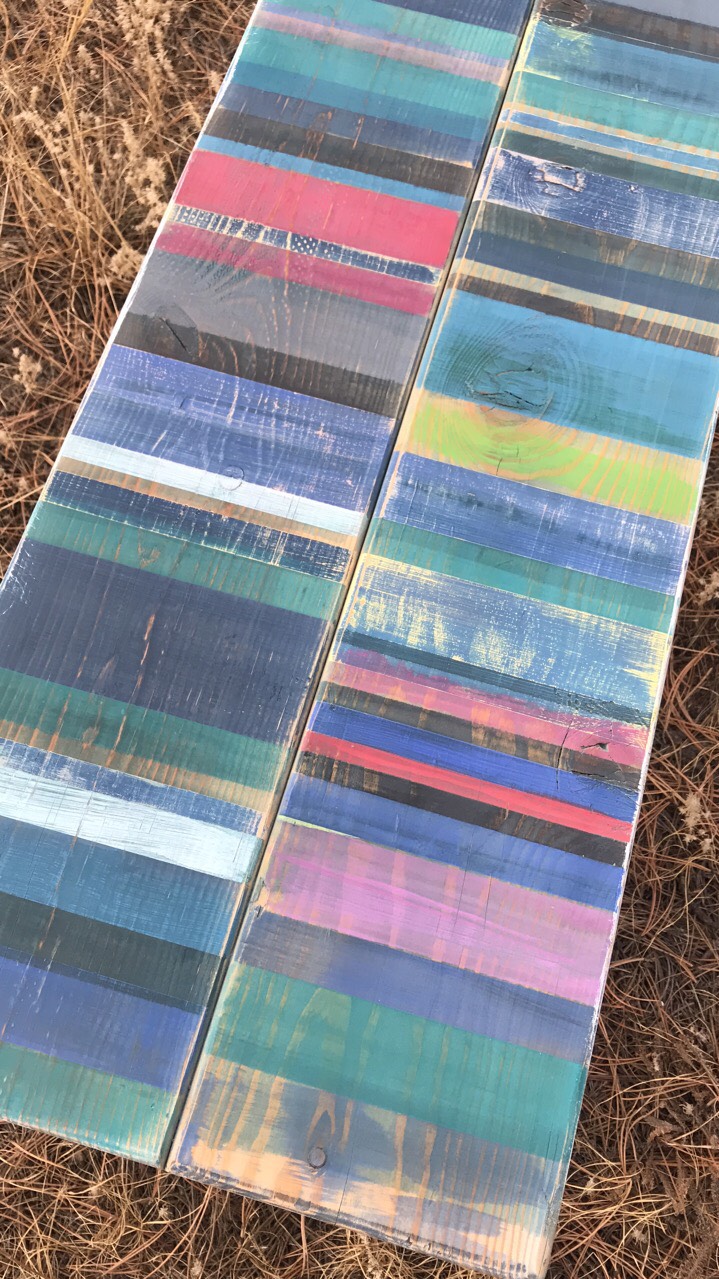
8. Apply a clear coat to protect the bench.
The last step is to clear coat the bench to preserve your hard work and protect it from soaking up stains and oils.
One of the most durable clear coats you can coat your bench with is polyurethane. Polyurethane is so durable it’s one of the few clear coats recommended for wood floors.
You’ll want to put two or three coats of it on your bench, sanding lightly between coats to keep a smooth finish.
Okay, folks, that’s it! What do you think? Do you like how it turned out?
I’d love to see photos of your version of this project, especially if you experimented with some new take on this design. Feel free to ask me any questions or leave a comment below.
If you want to keep up with my latest project ideas then sign up for our newsletter below. Thanks for reading!
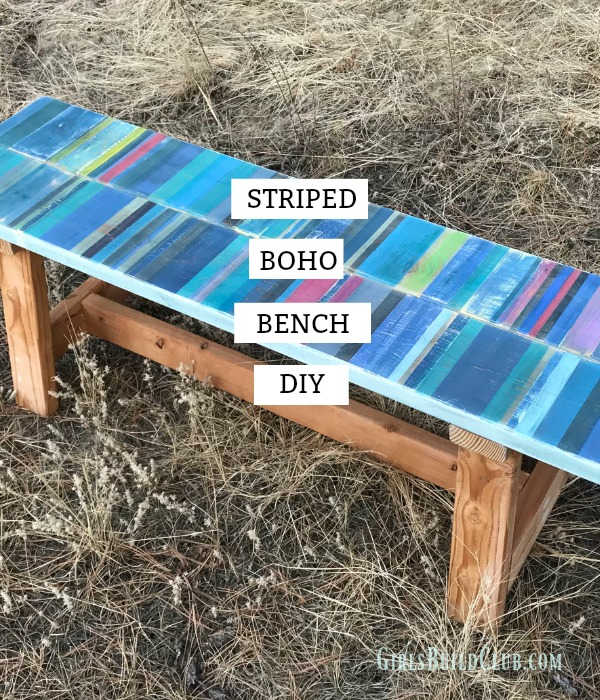
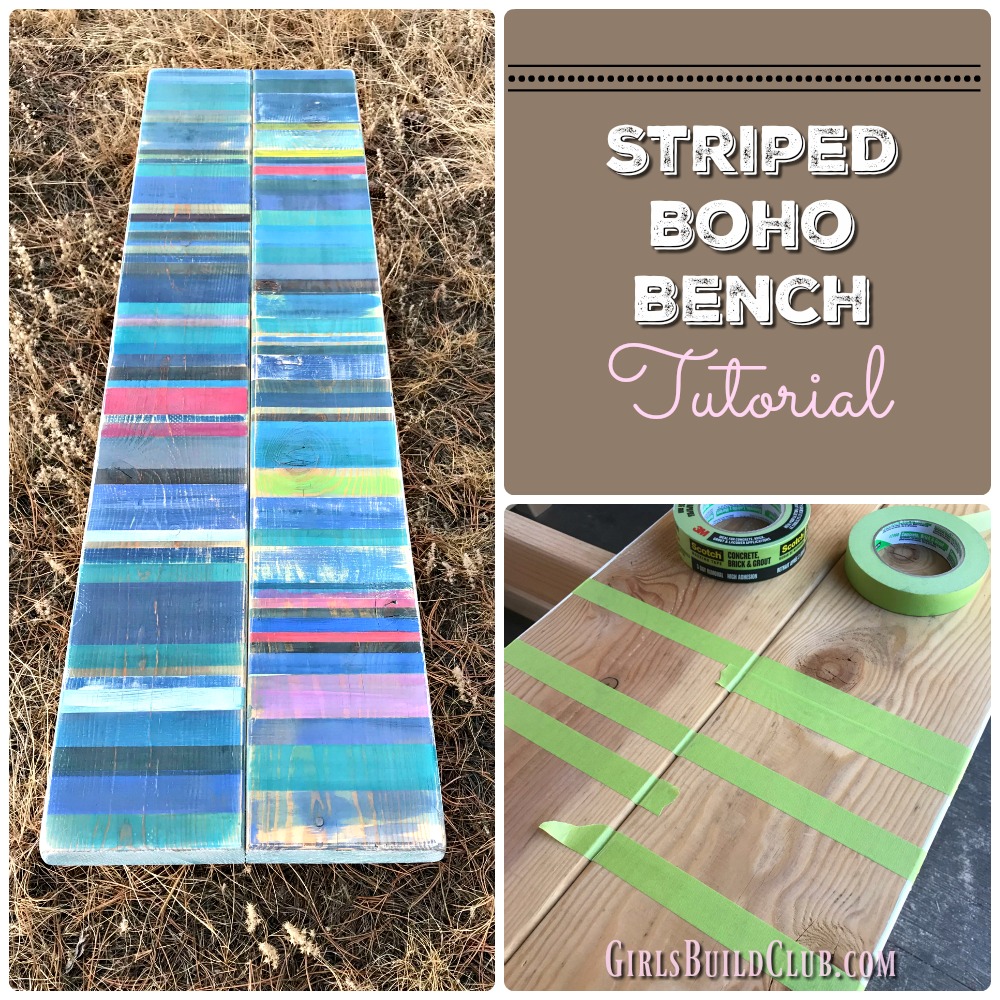
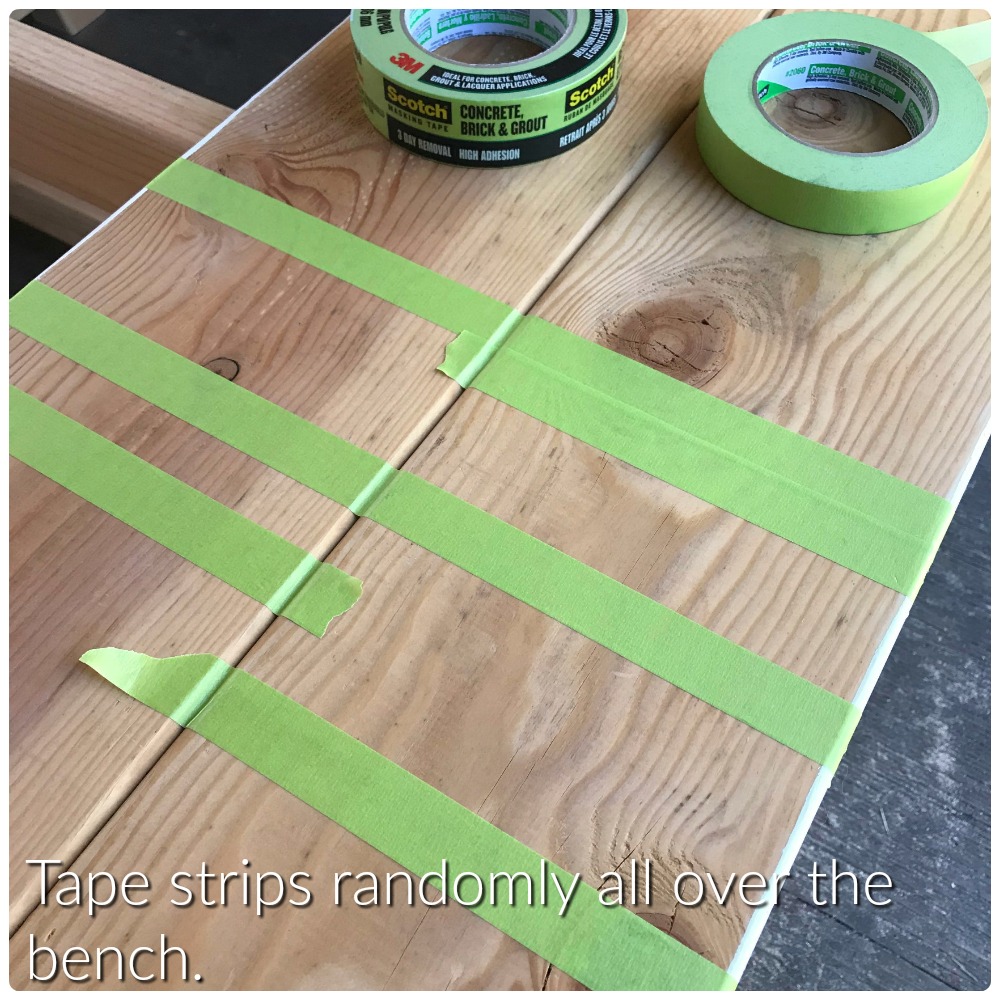
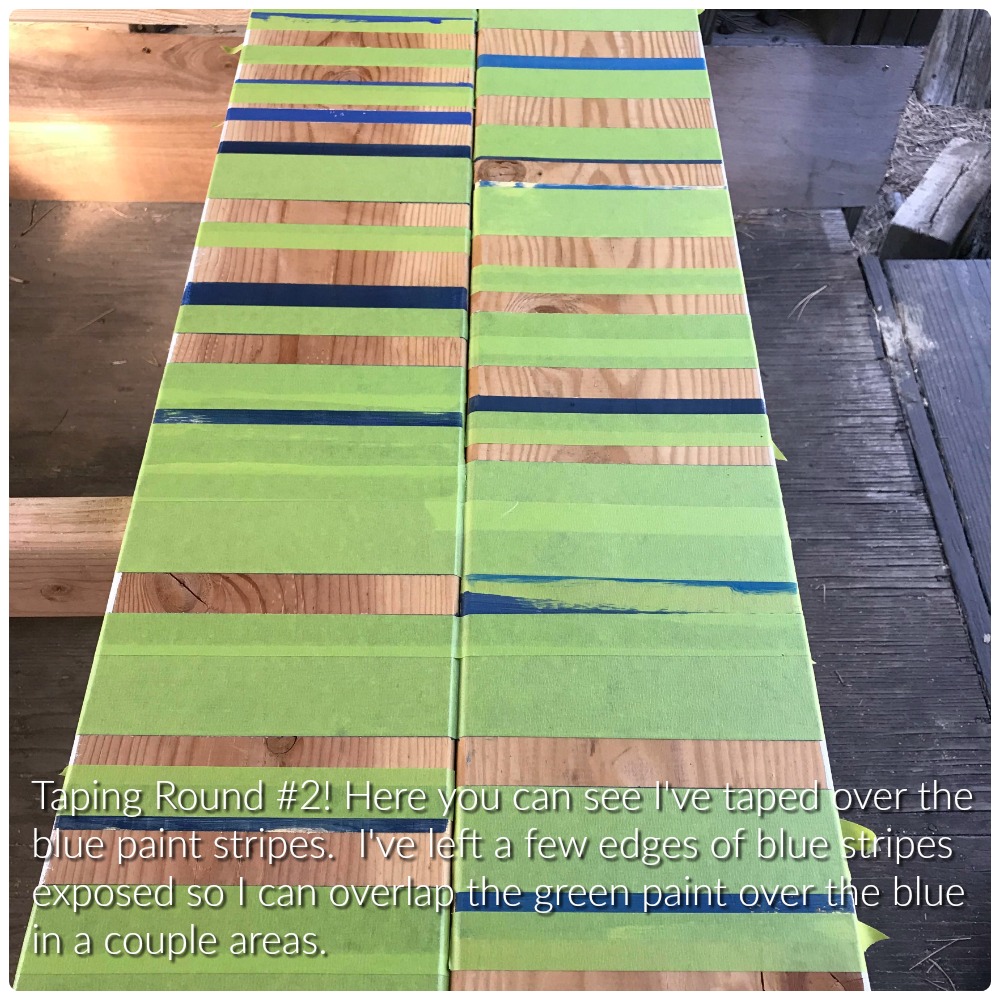
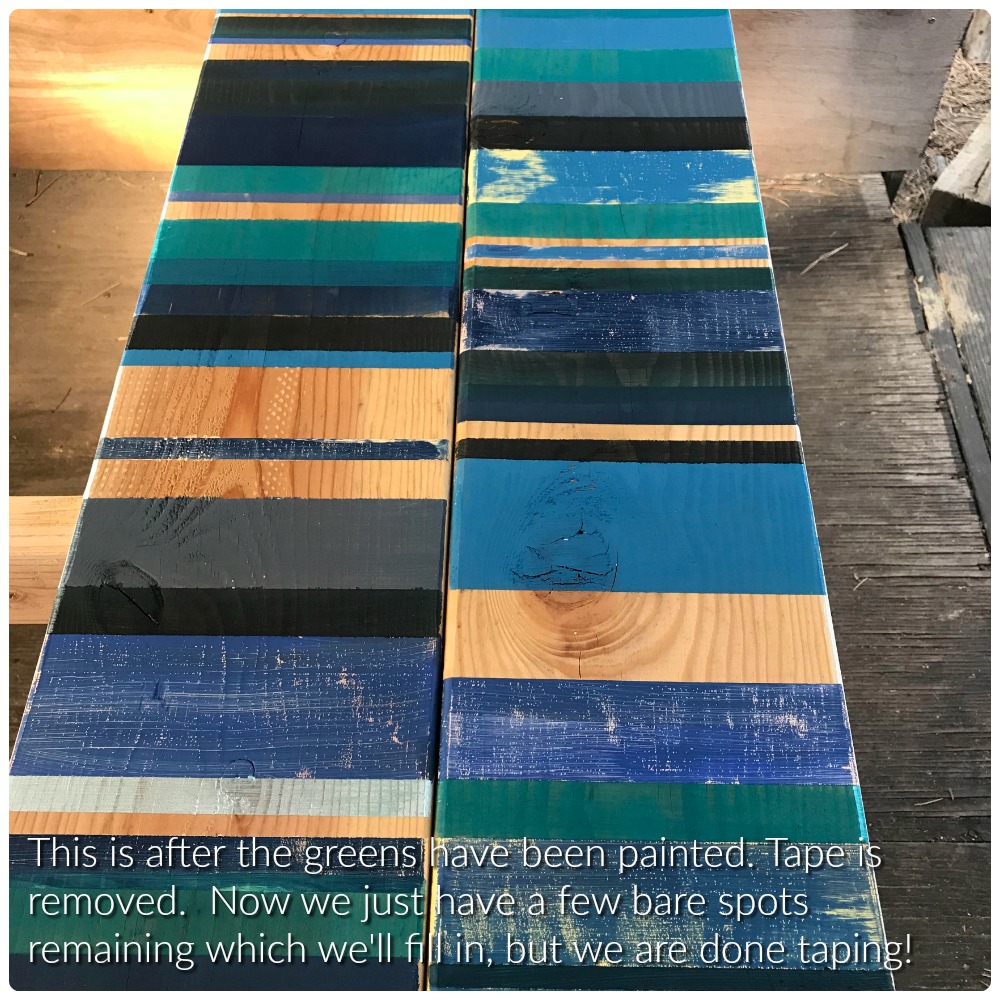
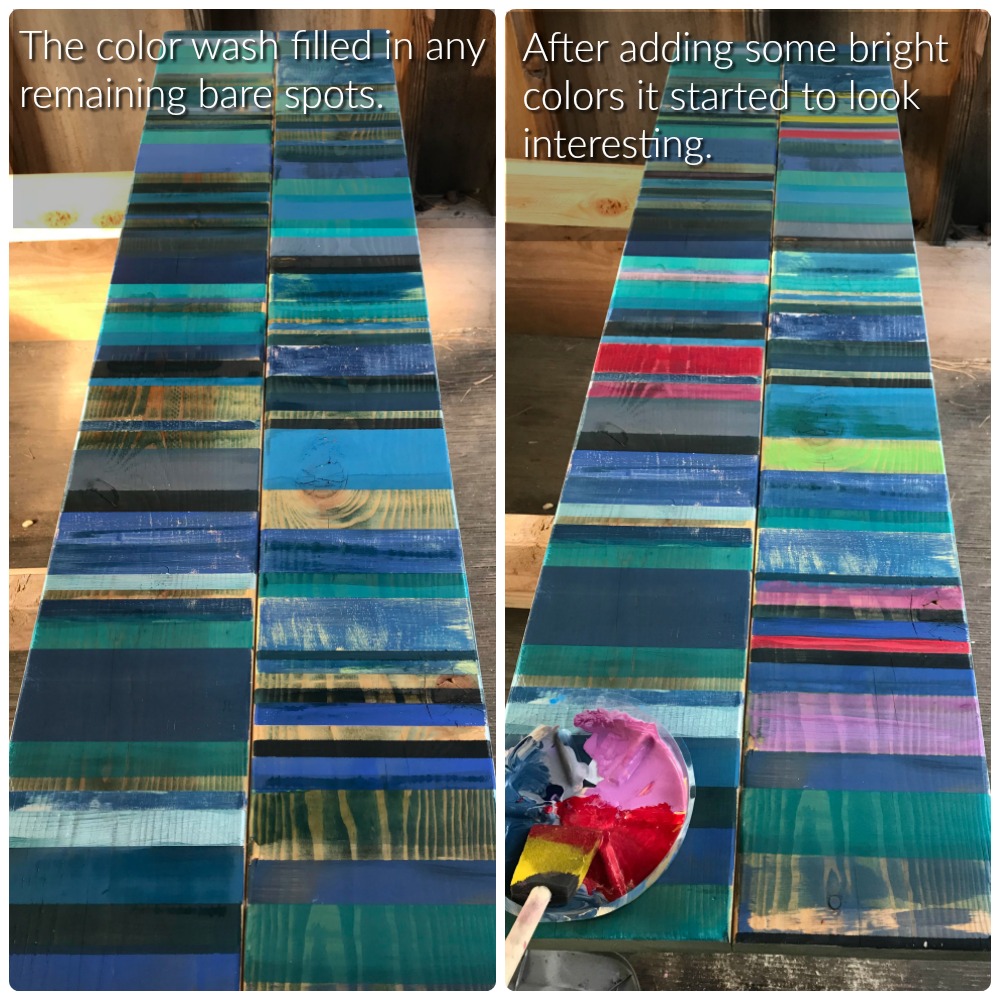
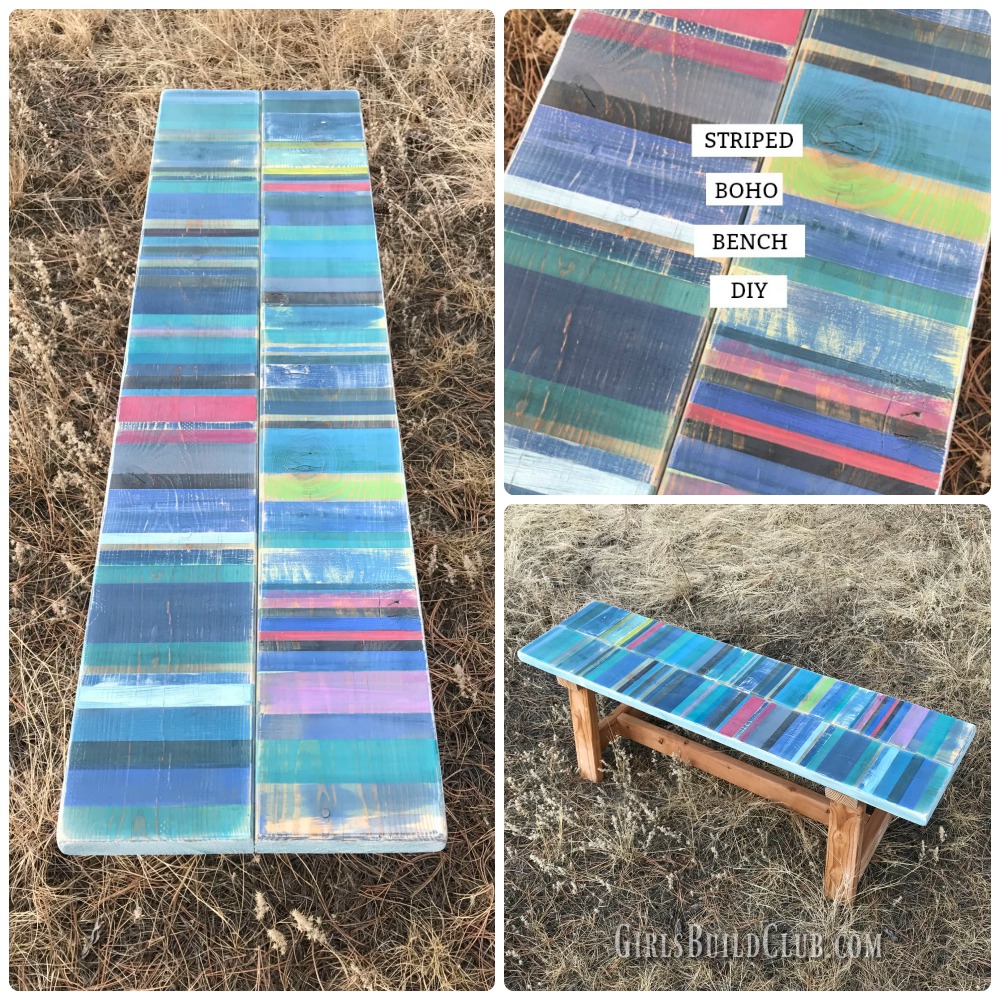
How did you build the bench! I love this idea but do not have the bench to start with!
Hi Kim! I built the bench from plans on Ana-white.com, and you’ll find the plan here: http://www.ana-white.com/2012/04/plans/providence-bench. The first one I built took a couple days, but after doing it several times I can now do it in about 3 hours! So go easy on yourself if it’s your first build. 🙂 Good luck!